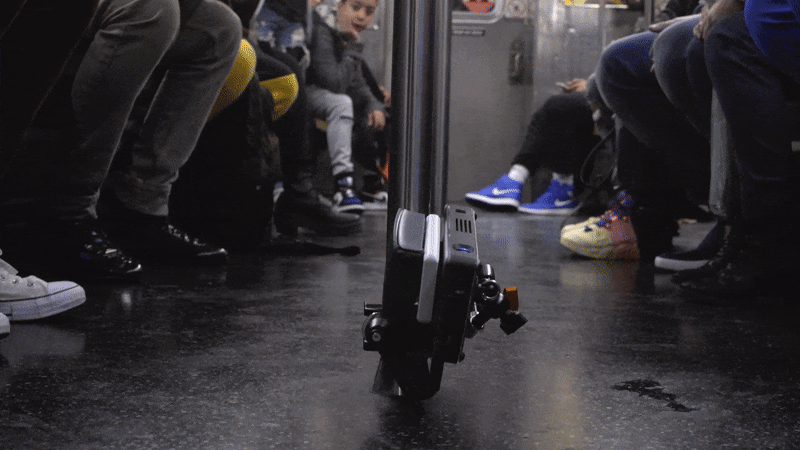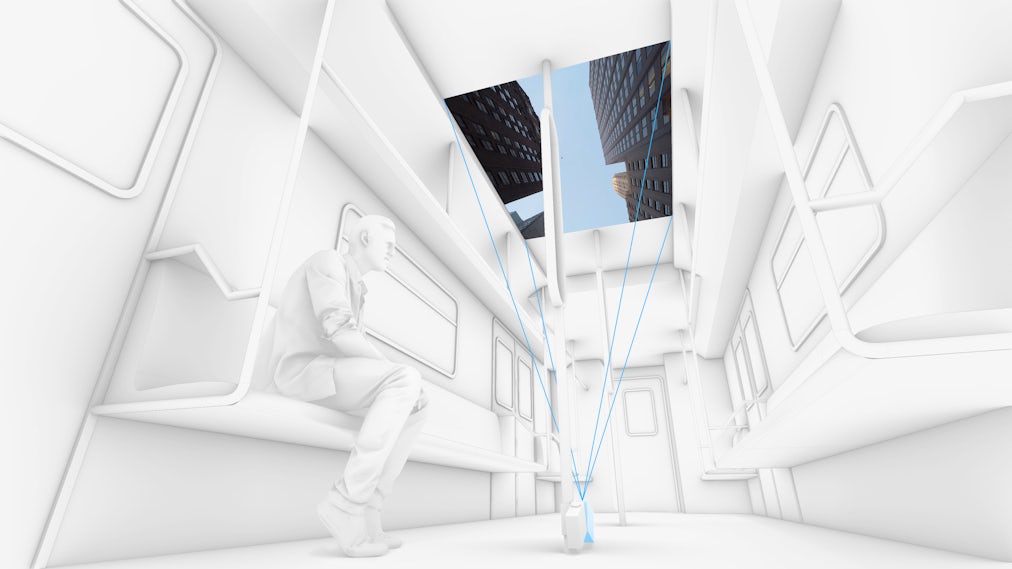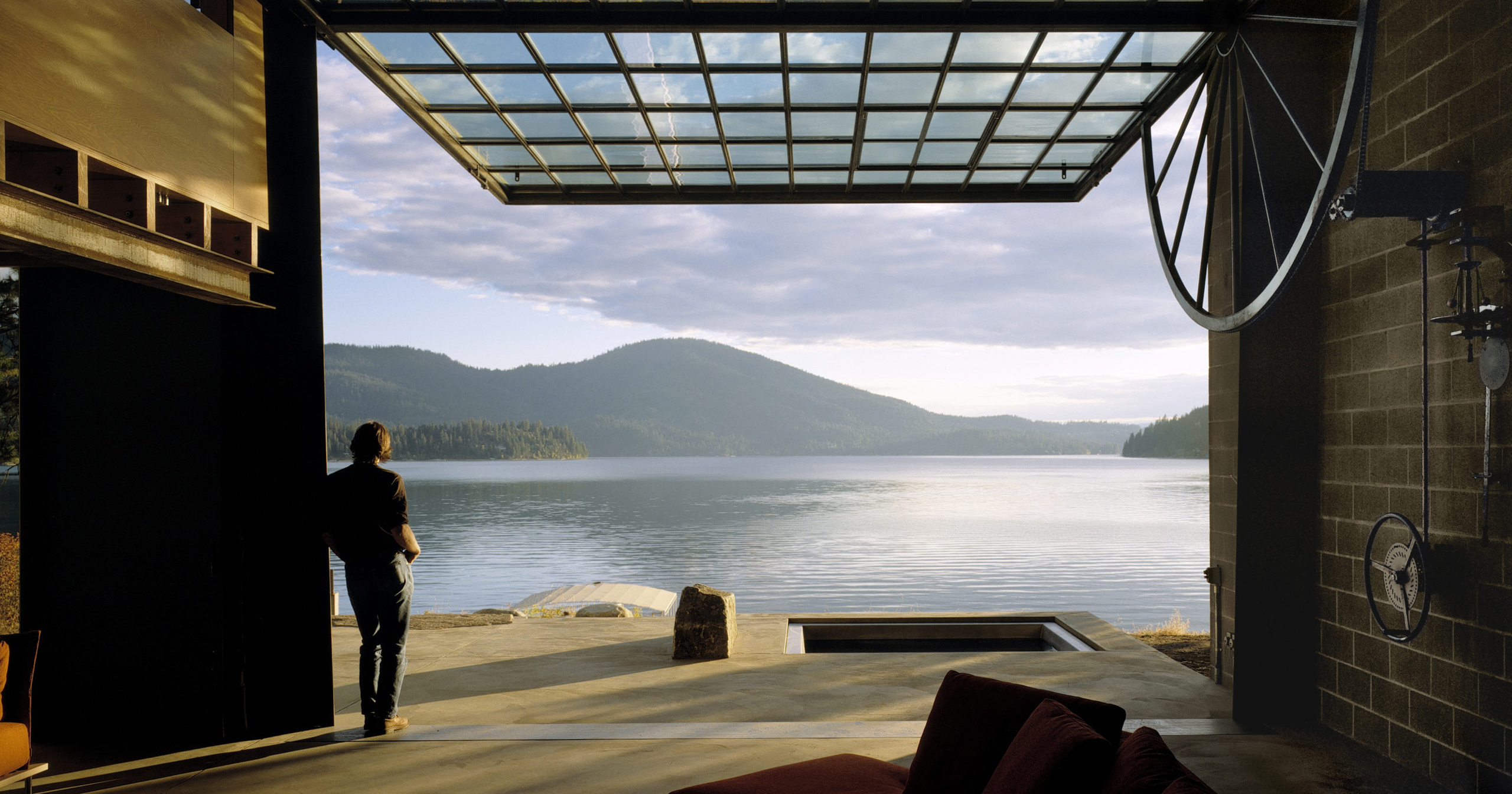Uptown Underground – was conceived of as a technology-positive intervention, implementing digital technologies to augment our urban experience in a simple but novel gestural manner. Just by looking up, a subway rider might put down their phone or book, compelled to engage with their environment, and particularly their movement through it, in previously unconsidered ways.
Architizer chatted with Ian Callender, principal at Studio Ian Callender, to learn more about this project.
Architizer: What inspired the initial concept for your design?
Ian Callender: Inspiration came from two distinct events brought adjacent: a glass-bottom boat tour, and a subway ride uptown. After a friend’s wedding in Florida, one of our group was determined to set sail. We took to the waters on a dolphin-themed afternoon cruise, and seeing through to the depths below, my New York cynicism fell away. It was beautiful, and recontextualized my experience of the ocean in a manner I hadn’t at all expected. After a plane ride home, commuting on the subway the next day, my mind wandered to whether it might be possible to bring the same experience into the depths of the subway tunnels by employing those new tools around which I’ve built my practice. Here, though, that experience would simply be inverted.

© Studio Ian Callender
This project won in the 10th Annual A+Awards! What do you believe are the standout components that made your project win?
One of the fundamental aspects of this project was a commitment to getting it out into the world, repeatedly deploying it, testing it, and reworking it. Its first exploration was purely technical, testing whether projectors had sufficient brightness and throw to function in a train. Its second was social, using a simple slideshow of images of buildings loaded onto a single projector to see if anyone would react. They did, and an incredibly low-resolution implementation provoked great curiosity and awe. Through these two simple tests, the idea proved itself as worth pursuing further. All in, the installation took two and a half weeks of part-time work. It does not have to take much to deploy or test a concept.

© Studio Ian Callender
What was the greatest design challenge you faced during the project, and how did you navigate it?
As Uptown Underground ran without permission, the window to install was around sixty seconds as the train looped around, empty, from a downtown track to an uptown track. This meant the project had to be designed for ease of installation (and, for clear reasons, de-installation). Once the projectors and microcomputers were switched on, the project had to run itself.
Beyond this, the subway is not an environment that’s particularly suited for digital technologies: wagons rattle and shake, GPS reception cuts in and out, and cars crowd to the brim with commuters. Each of these asked for the installation to be well-designed and robust: first, physically, where each assembly had to be overengineered; second, digitally, with redundant processes to serve in place of one another; third, impactfully, easy enough for riders to immediately identify as worth stepping aside from and enjoying.

© Studio Ian Callender
How did the context of your project — environmental, social or cultural — influence your design?
Environmental context was the entire project–although not in the traditional sense of sustainability, but rather immediate physical surroundings. It is that context which is so completely stripped away during a subway ride, with a train engulfed in darkness, save the occasional flash of a passing light or spark from the tracks. It is that context which Uptown Underground restores, though not didactically, but simply through presence and motion.

© Studio Ian Callender
What is your favorite detail in the project and why?
Each time the train passes around 50th street, in the video being projected, two birds fly overhead. They’re moving in the same direction of travel as the train, and the same speed. For those thirty or so seconds, we’re brought into a relationship with these two other living beings, brought to consider their experiences of the city, their experience completely foreign to our own, and made to wonder. It’s a moment of reflection within a moment of reflection.

© Studio Ian Callender
Were any parts of the project dramatically altered from conception to construction, and if so, why?
The project’s original title was SUBWAY SCREENS. All its files are still named this on my drive. It reflects the idea poorly, particularly since the installation doesn’t use any screens. Uptown Underground is a bit better–UP TOWN because you’re looking UP at the TOWN, and underground because, well… If I were to give it another go, I might spend a few more minutes trying to develop a stronger name.

© Studio Ian Callender
How do you believe this project represents you or your firm as a whole?
My practice believes that new technologies are a tool through which to understand and interpret long-standing questions in architecture and urbanism. Even if inspiration comes from innovation, concept and theory necessarily lie below so as to engage with and keep alive discourse. This is the lineage in which I believe Uptown Underground sits–implementing the technical for the sake of the poetic.
For more on Uptown Underground, please visit the in-depth project page on Architizer.









 Uptown Underground
Uptown Underground 


